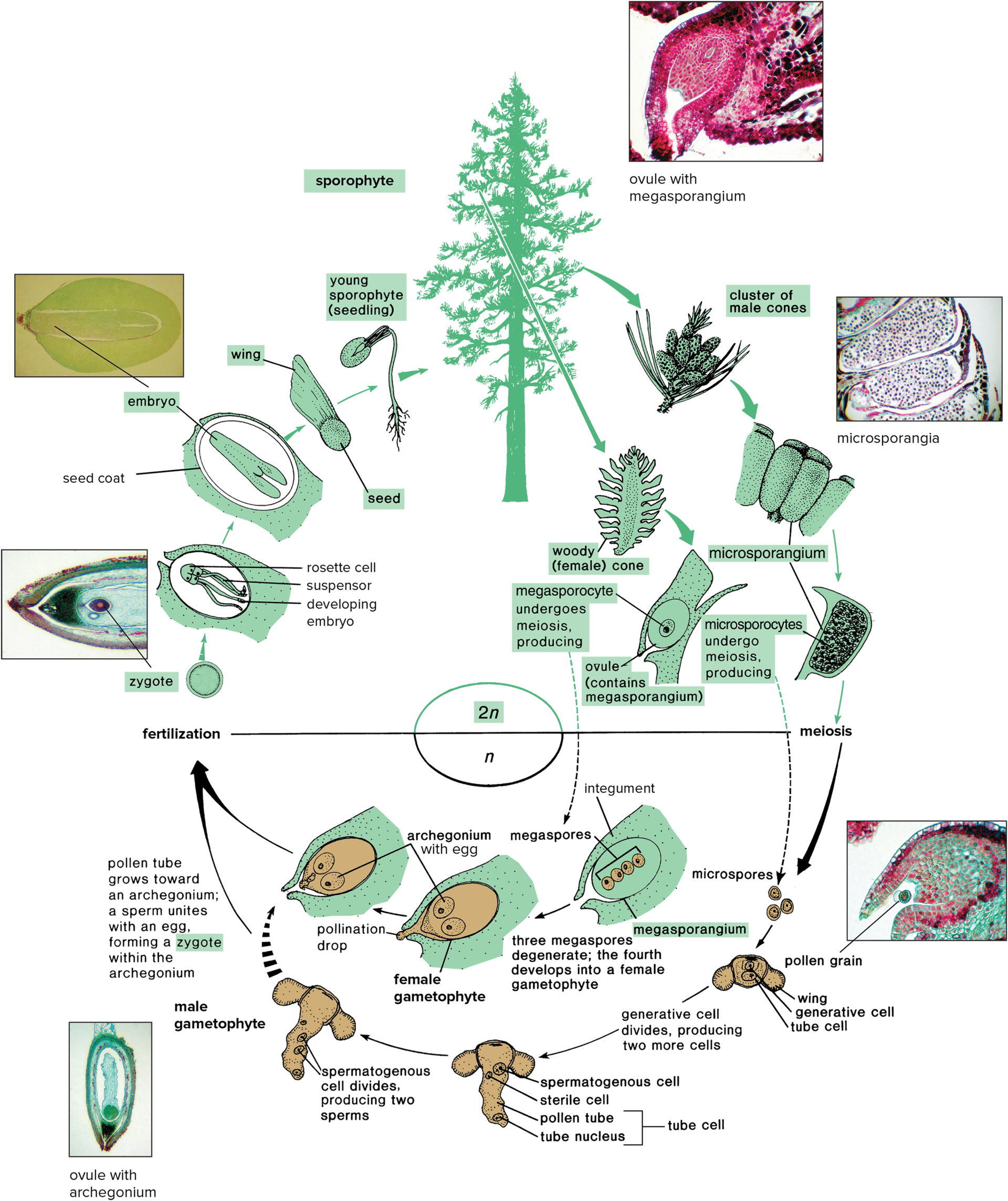Gymnosperms
1/15
There's no tags or description
Looks like no tags are added yet.
Name | Mastery | Learn | Test | Matching | Spaced |
|---|
No study sessions yet.
16 Terms
Gymnosperms
the first seed plants, came to be during the Mesozoic period
sporophyte dominant- male gametophyte dispersed into wind and germinate within female cone
Characteristics of Gymnosperms
produce seeds in strobili-like structures; seeds are not protected
gametophyte does not grow independent of the sporophyte
most are monoecious- male and female reproductive structure on one organism
all modern gymnosperms are woody: trees, shrubs, or lianas (woody vines)
Reproductive Characteristics
cycads and gingkoes- some reproductive characteristics (flagellated sperm) more like seedless plants
conifers and gnetophytes- some reproductive characteristics (non-flagellated sperm, double fertilization) more like Angiosperms
Cycads
tropical and subtropical; often grown as houseplants
all species are endangered in their natural habitats
resemble palms but stems are covered with tough, persistent leaf bases
can be large (up to 40 ft); leaves up to 29 ft long, seed cones up to 30 in long and weighing 40 kg that emit an odor when mature that attracts beetle pollinators
Cycads as Food
food of native peoples in Australia and some Pacific Islands; Florida has one used for arrowroot powder
however, all cycads produce toxins and are difficult to remove
seed flour contains BMAA amino acid that can increase chance of dementia
Cycad Roots
many produce coralloid roots- grow above ground and are symbionic with cyanobacteria which fix nitrogen and produce toxins
Ginkgo
only remaining species is ginkgo biloba (evolved 251-286 MYA)
probably extinct in the wild, especially due to global warming event
dioecious- individual trees produce either pollen (male parts) or ovules and seeds (female parts), which have a bad smelling seed coat
Conifers
first known from fossils and believed to be extinct until rediscovered in 1944
pinewood contains primarily tracheids and no fibers, canals contain resin
evergreen; shed needles after 2-4 years; low photosynthesis during cold seasons
some are deciduous and shed needles all at one time (ex: tamarack, bald cypress, dawn redwood)
Conifer Adaptations
conical shape and flexible branches to shed snow; leaves adapted to dry conditions, surface area is reduced with a thick, waxy cuticle to prevent water loss; stomata is sunken; hypodermis protects underlying cells
resin may trap insects and protects leaves against pathogens and predators
Gnetophytes
gnetum- grow in vines, shrubs or trees in Asia and Africa
have broad leaves not seen in other gymnosperms; considered gymnosperm due to its reproductive cycle similarity
Gnetophytes Historyish
absence of archegonia- lost during evolution as female gametophytes decreased in size
DNA evidence shows that gnetophytes had conifer ancestors; fossils indicate that angiosperms evolved from gymnosperms; not known whether gnetophytes were ancestral link to angiosperms
Ephedra (Mormon Tea)
a well-known gnetophyte found in southwestern US
leaves are tiny brown scales
contains the alkaloid ephedrine often used for weight loss (can have adverse cardiac effects); purpose of alkaloid is actually to prevent predation
Welwitschia
gnetophyte that grows in the coastal deserts of southwestern Africa
has long taproot; two very long leaves; obtains much of its moisture from coastal fog
climate change is threatening them since fog is reduced
Production & Structure of Ovules
heterosporous- two spores: megaspore and microspore
diploid megasporangium goes through meiosis and produces haploid
seed plants produce microspores in microsporangium and release microspores containing male gametophyte pollen grains
megaspores are in megasporangia
Lifecycle of Pine

Ecological Advantage of Seeds
can remain dormant in the soil for years
seed walls are thicker than spores- offer more protection against pathogens/mechanical damage; store more food than spores
seed coats can be modified (through adaptation) to facilitate dispersal by wind or animals
most seed tissues are diploid, so 2 alleles for each gene